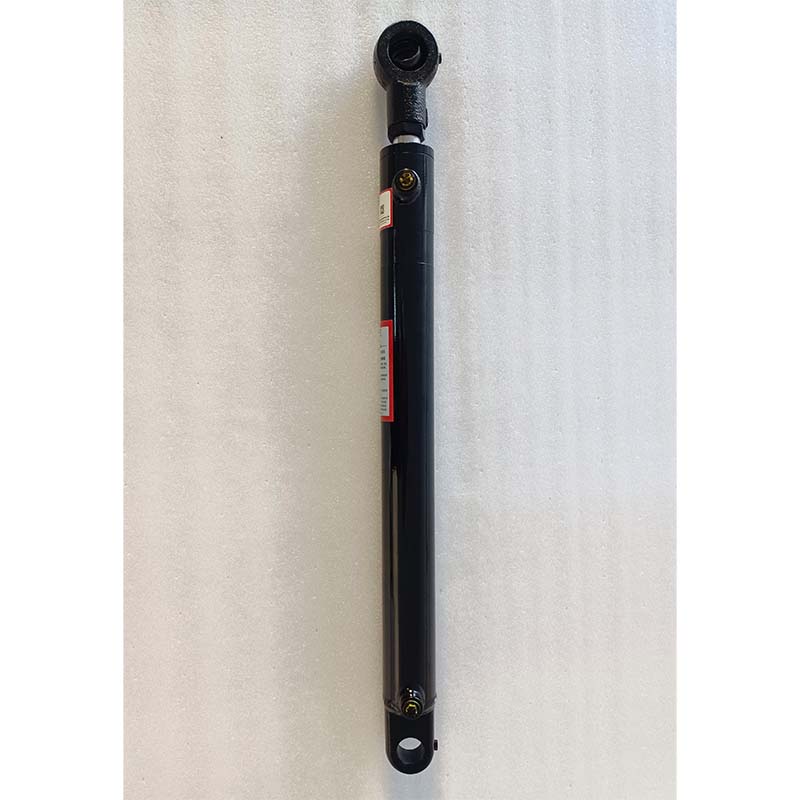Aug . 12, 2024 18:52 Back to list
Spring-Activated Hydraulic Cylinder Designed for Enhanced Performance and Durability in Industrial Applications
The Evolution and Benefits of Spring Loaded Hydraulic Cylinders
In the world of industrial machinery and equipment, hydraulic cylinders play a pivotal role in converting hydraulic energy into mechanical power. Among the various designs, spring loaded hydraulic cylinders stand out for their unique functionality and broad application. This article explores the features, advantages, and typical uses of spring loaded hydraulic cylinders, demonstrating their indispensable role in modern engineering.
Understanding Spring Loaded Hydraulic Cylinders
A spring loaded hydraulic cylinder is a type of actuator that utilizes hydraulic fluid to generate linear motion. Unlike traditional hydraulic cylinders, which rely solely on fluid pressure to extend or retract, the spring loaded variant incorporates a mechanical spring. This spring provides an additional force, assisting with the cylinder’s movement and enabling it to return to a predetermined position when pressure is released.
The design of these cylinders allows them to be highly versatile. The integration of a spring mechanism means that they can maintain a load even when hydraulic pressure is not actively applied. This feature is particularly beneficial in scenarios where fail-safe operations are critical.
Key Benefits
1. Safety and Reliability The most significant advantage of spring loaded hydraulic cylinders is their fail-safe capability. In applications where the loss of hydraulic pressure could lead to dangerous conditions, the spring acts as a backup, ensuring that the system remains stable. This enhances the overall safety of machinery and operators.
2. Greater Control The dual mechanism of hydraulic pressure and spring force allows for more precise control over the cylinder’s movement. Operators can manage both the speed and the position of the cylinder with greater accuracy, improving operational efficiency.
3. Energy Efficiency By utilizing spring force to assist in movement, these cylinders can reduce the amount of hydraulic fluid required for operation. This not only lowers energy consumption but also decreases the overall operational costs.
spring loaded hydraulic cylinder product

4. Compact Design Spring loaded hydraulic cylinders are often more compact than their traditional counterparts due to the combined functionalities of the spring and hydraulic mechanism. This makes them easier to integrate into tight spaces in machinery where traditional cylinders may be unwieldy.
5. Customizability Manufacturers can engineer these cylinders based on specific applications, allowing for customized spring tensions, stroke lengths, and mounting configurations. This adaptability makes them suitable for a broad range of industries.
Applications Across Industries
Spring loaded hydraulic cylinders find applications in various fields, including manufacturing, construction, and automotive industries. In manufacturing, they are often used in automated systems for material handling and assembly. Their precision control enables seamless operations, which is critical for maintaining production efficiency.
In construction, these cylinders are instrumental in lifting heavy materials and enabling the movement of equipment. They help ensure that cranes and other machinery operate smoothly, particularly in environments where safety is a concern.
In the automotive sector, spring loaded hydraulic cylinders are utilized in assembly lines for tasks such as lifting components or automating various processes. Their ability to provide consistent and reliable force makes them invaluable in production environments.
Conclusion
In summary, spring loaded hydraulic cylinders represent a significant advancement in hydraulic technology. Their unique benefits—enhanced safety, greater control, energy efficiency, compact design, and customizability—make them an attractive solution for various applications. As industries continue to evolve and demand more from their machinery, the importance of spring loaded hydraulic cylinders is only set to increase, proving their worth in modern engineering solutions. Companies looking to improve their operations would do well to consider the integration of these advanced hydraulic devices into their systems.
-
Fork Lift Power Units - Hebei Shenghan | Efficiency, Reliability
NewsJul.13,2025
-
1.5-Ton Turbocharged Cylinder-Hebei Shenghan|Hydraulic Solution,Energy Efficiency
NewsJul.13,2025
-
Auto Hoist Power Units-Hebei Shenghan|Efficiency&Industrial Lifting
NewsJul.13,2025
-
Double Acting Power Units-Hebei Shenghan|Hydraulic Solutions,Industrial Efficiency
NewsJul.13,2025
-
1.5 Ton Lifting Cylinder 70/82-40-290-535 - High-Performance Hydraulic Solution | Hebei Shenghan
NewsJul.13,2025
-
Fork Lift Power Units - Hebei Shenghan | Efficiency&Reliability
NewsJul.13,2025
